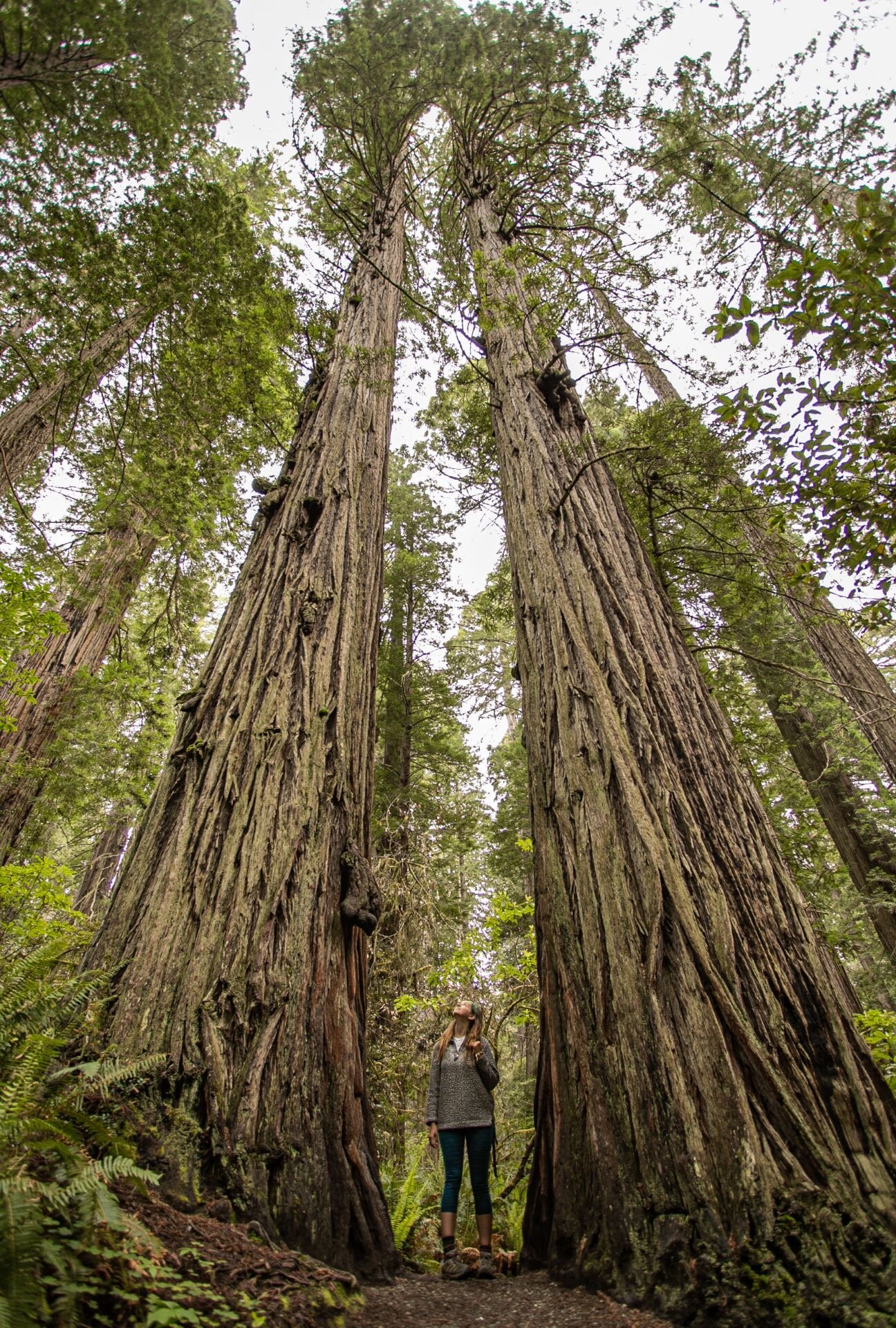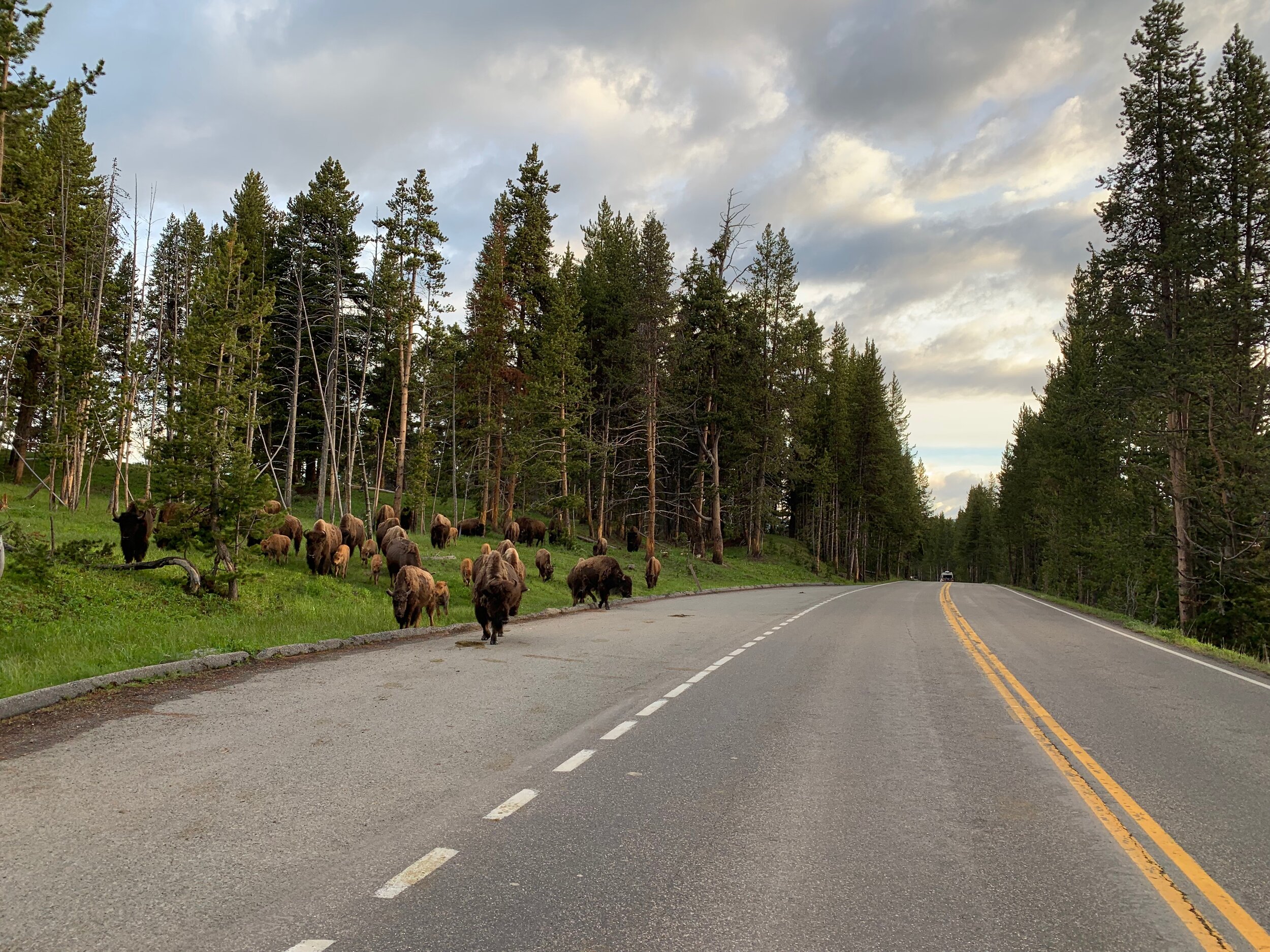If you’re at all familiar with the Pacific Northwest, you’ve probably heard of Bend. To me, it’s the mountain version of Sedona. It’s surrounded by National Forest Land, and everyone here recreates outdoors, from river surfing to climbing. It’s a city that welcomes vanlifers, and has some of the best nature in Central Oregon right on its doorstep.
We had the chance to spend about a week in Bend while we waited for our new dog, Lassen to be able to get his shots, so we took advantage of our time there, and explored every corner. These are the top 3 things to do in and near Bend, OR.
Tumalo Falls
Tumalo Falls is located closest to the downtown area of all the spots on this list. It is part of a busy recreation area in the Deschutes National Forest that follows a stream of waterfall runoff. When we were there, the road to the actual parking area was closed, but it was a short and easy 2.5 miles of road hiking to the falls. Once you get there, there are three viewpoints, a mid-height one that you’ll see first, an easily accessible top of the falls view, and a more hidden trail to beneath the falls (where you might get a bit wet!).
Tumalo Falls is dog and family friendly and welcomes people recreating as hikers and mountain bikers. There is a $5 fee to park in the main parking lot if the road is open (but I believe they accept the America The Beautiful Pass as well).
On the way to Tumalo Falls
Smith Rock State Park
Smith Rock State Park is easily one of the most popular things to do in Bend, OR for hikers and climbers. When I asked what people suggested in Bend, this was the first thing to come up. I’d been here once last summer as well when I was driving the Lower 48, but because we had the new dog with us, I knew it would be a good choice, since the park is dog friendly. At Smith Rock, there is a $5 day use fee (and they do not accept Interagency Passes like America The Beautiful as they are a state park).
Smith Rock is known for its towering rock spires, winding Crooked River, and its over 1000 sport climbing routes. Needless to say, as a hiking/climbing couple, we had to at least check it out. Smith Rock is a desert, though, and currently, due to a public health safety law, all water fountains in the park are turned off. Please make sure you prepare for hot weather and bring more water than you think you need.
Smith Rock State Park
Crater Lake National Park
While Crater Lake isn’t specifically in Bend, Bend is the closest big city north of the park. The National Park officially reopened on June 6, 2020, and currently, the only parts of the park that remain closed are due to weather. Crater Lake is the ninth deepest lake in the world, and the deepest in the United States, so even if the trails are closed due to snow, it’s not impossible to get a grand view worthy of the photo albums during your trip to Crater Lake.
Until the snow melts, only Crater Lake’s West Rim Drive will be open, as well as the Rim Village gift shop. Even though this is only 13 miles of road, it will give you the best and closest views of Wizard Island and the nearby mountains in the distance.
Read more about Crater Lake in my full guide to the park. Click the button below to read!
Crater Lake National Park at the end of its winter season
Bend, OR is one of the most outdoorsy towns in the Pacific Northwest. It’s known for its outdoor sports, rivers, and nearby parks. And on top of that, it’s incredibly dog and van friendly! So next time you’re passing through Oregon, make sure you stop and take a hike—the view is worth it.



































































